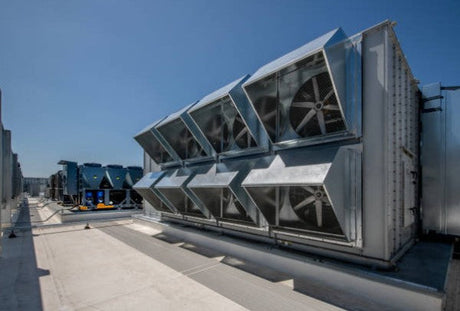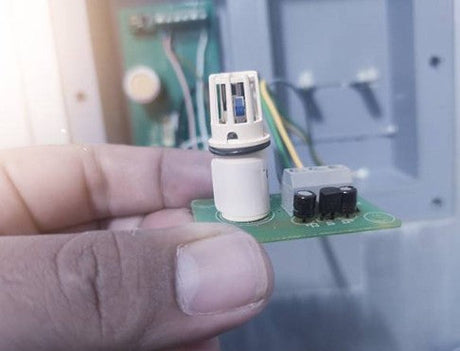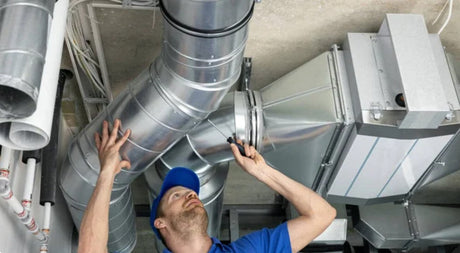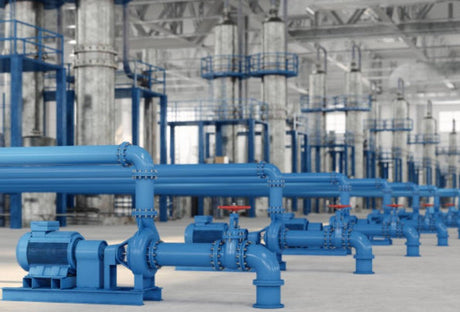In today's world, in which energy efficiency and cost reduction play an increasingly important role, mug thermostats are becoming increasingly important. Due to their versatile use in both industrial applications and in the Heating, ventilation and air conditioning technology (HLK) you offer an efficient option for temperature control. Interpret thermostats and the associated feelers not only offer precise control over the temperature in different systems. They also contribute significantly to the saving of energy and thus to reduce operating costs.
Functioning of base thermostats
Investoring temperature sensors, also known as a sensor in contact or surface, are sensors that are used to measure the temperature on solid surfaces. They work by bringing into contact thermally with the surface, the temperature of which is to be recorded. The sensor itself consists of a temperature -sensitive element, such as one Thermoelement, a resistance thermometer or a semiconductor, which changes its electrical properties (such as electrical resistance or the generated voltage) depending on the temperature. This behavior enables the sensor to detect the temperature changes of the surface and convert it into an electrical signal, which is then directed to a display instrument, a controller or an automated system in order to monitor the measured temperature and, if necessary, to initiate any control processes. In order to secure efficient heat transfer and to minimize the influence of ambient temperatures, the poll temperature sensor is typically attached to the surface by means of a thermal paste or a comparable agent.
Criteria for the correct selection of feelers
The selection of the right feeling is crucial to ensure precisely and reliable temperature measurements. Significant criteria in the selection:
- Temperature range: The sensor must be suitable for the specific temperature range of the application. Different sensor types - e.g. thermistors, thermo elements or RTDs - have different temperature ranges and accuracy properties.
- Measurement medium and environmental conditions: The sensor's resistance to environmental influences, such as moisture, chemicals or mechanical stress, should be suitable for the intended measurement medium and the operating environment.
- Accuracy and response time: Each application has its own requirements for the accuracy and speed of the measurement. Highly accurate sensors or those with a short response time could be necessary, depending on the need for faster and precise temperature regulations.
- Assembly technology: The type of assembly influences the efficiency and accuracy of the temperature transmission. It is important that the sensor is compatible with the surface and that the assembly enables optimal heat conduction.
- Output signal: Depending on the tax or monitoring system, the output signal of the sensor (e.g. 0-10 V, 4-20 MA for active sensors or generation of a resistance value in passive sensors must be compatible.
- Compatibility with control units: The feeler should be compatible with the existing control or the evaluation system to ensure that the signal can be read out correctly and processed.
- Construction and size: The physical compatibility of the feeler with the application must be guaranteed, so that factors such as size, shape and assembly accessories must be observed.
A careful assessment of these criteria can ensure that the selected feeler is optimally suitable for the respective application and that the desired function reliably fulfills.
Areas of application of jetty thermostats
The areas of application of laying thermostats and feelers are diverse and cover almost all industries that require precise temperature control. Here are some concrete examples:
- Industrial production: In production systems, base thermostats can be used to monitor the temperature of machines. Active feelers provide precise data in order to keep the machines with optimal operation and to avoid overheating.
- Food industry: For the processing of food, the exact compliance with certain temperatures is essential. Interdiction thermostats regulate the temperature in incense stoves or brewery kettles and ensure that the quality of the products is preserved.
- HLK systems: In the building automation, mug thermostats control the temperatures in heating systems, air conditioning devices and ventilation systems. Passive sensors are suitable here to increase efficiency by adapting the operating times and the intensity of the systems to the actual need.
- Data centers: In data centers it is essential that the servers do not overheat. Plant thermostats with passive sensors monitor the cooling and increase the efficiency of the cooling system by regulating them as required.
Practical examples to increase energy efficiency by sensitors
Feeler Make a significant contribution to increasing energy efficiency in industrial applications and in the area of heating, ventilation and climate industry by enabling precise temperature monitoring and control.
A practical example from industry is that Use of feelers in process control. In a plastic processing plant, the sensors monitor the temperature of the extruders exactly. The exact control of this temperature can be optimized for heating the material. Overheating is avoided, which not only saves energy, but also improves the quality of the end product and reduces committee.
In the HLK technology ensure that in a ventilation system For the fact that the temperature of the supply air is adapted exactly to the room conditions. For example, sensor -based regulations can ensure that the heating of the air flow is only activated if the outside temperature falls below a certain point or the space capacity requires it, which reduces unnecessary energy consumption. In this way, residual sensors ensure that the needs and thus energy-efficient air conditioning ensure, which in turn lowers the energy costs and contributes to the reduction of the building's CO2 footprint. These examples illustrate how important an accurate temperature measurement and control for the energy efficiency of heating and cooling processes is, which ultimately leads to an economic and ecological advantage.
In modern agriculture, greenhouses play an important role for the Efficient and year -round plant production. Here, precise control of the climate is crucial to create ideal growth conditions and at the same time save energy. In this environment, residual sensors can contribute significantly to energy efficiency.
Another practical example is in the area of greenhouses that grow various sensitive plants that require optimal temperatures for growth and development. Feeling sensors are installed on the pipes of the heating system to precisely measure the surface temperature of the heating pipes. These continuous measurements enable the climate control system to regulate heating power in real time. If the outside temperatures rise during the day, the sensitors detect a higher temperature on the heating pipes and signal the system to reduce the heating, since the natural solar radiation provides enough heat. This avoids excessive heating and leads to considerable energy savings. At night, when the temperatures fall, the sensitors give feedback on the falling temperatures, and the system can react by upset the heating to the required level to protect the plants from cold.
The use of mooring thermostats not only save costs and the environment can be protected, but the precise work of the sensitors also increases the comfort and functionality in residential buildings and industrial plants.
The investment in modern mug thermostats and high -quality feelers pays off for companies and private households equally by contributing to improved energy efficiency and reducing operating costs. In the future, the innovative further development of contact sensors will further increase the precision and efficiency of these systems, which makes it an indispensable part of building automation and industrial processes.
Typical errors in dealing with feelers and how to avoid them
When choosing and assembling, various errors can occur, which can significantly impair the accuracy and reliability of the temperature measurement. Below we have summarized some typical errors that need to be avoided:
- Wrong feeler type: The selection of a sensor type that is not suitable for specific use or the medium to be measured can lead to inaccurate results. It is important to select the sensor based on the specific requirements such as the temperature range, response speed and environmental conditions.
- Inadequate thermal contact: The efficiency of the heat transfer between the sensor and the surface is crucial. If the sensor is not properly installed or if no suitable thermal paste is used, this can lead to poor thermal contact and consequently to inaccurate measurements.
- Wrong assembly position: The sensor should be installed in an area that is representative of the entire surface to be measured and not near heat sources or lowering in order to avoid incorrect measurements due to local temperature gradients.
- Environmental influences: The assembly of the sensor at one point that is exposed to weather influences or other ambient conditions can falsify the measurement. The sensor should be assembled protected to minimize external influences.
- Mechanical tensions: If sensors are tightened by too firm or damaged by mechanical tension, this can affect the accuracy or even lead to the failure of the sensor.
- Use of false assembly materials: The assembly of the sensor with unsuitable materials, e.g. with non -heat -resistant adhesive tape or sealant, can lead to measurement errors or damage to the sensor.
- Ignore cable and line resistors: Especially with passive sensors such as thermo elements, the resistance of the connection lines can affect the measurement signal. It is essential to take them into account when measuring and installation.
- Do not observe calibration and long -term stability: Aging sensors and their measurement accuracy can change over time. It is important to select a sensor with a well -known long -term stability when selecting and calibrating regularly.
In order to avoid these errors, the specifications of the guest temperature sensor should be carefully checked, the assembly instructions are strictly followed and specialist knowledge may be consulted. A correct selection, handling and installation are keys for reliable temperature measurements and the long -term functionality of the system.






